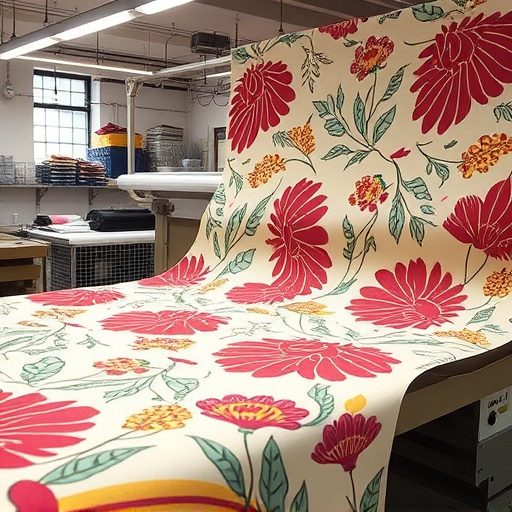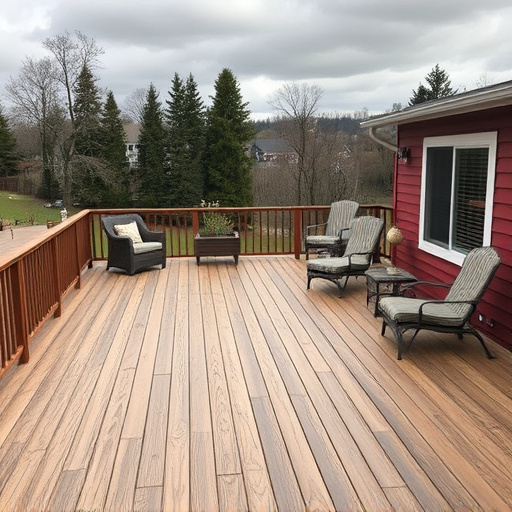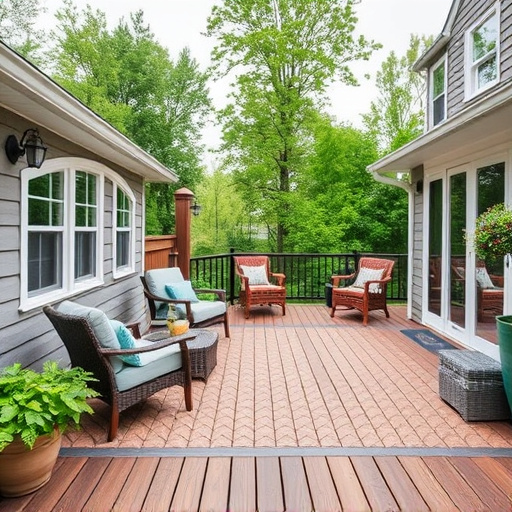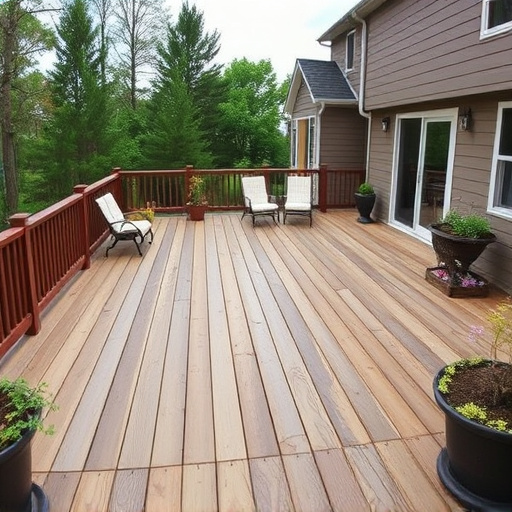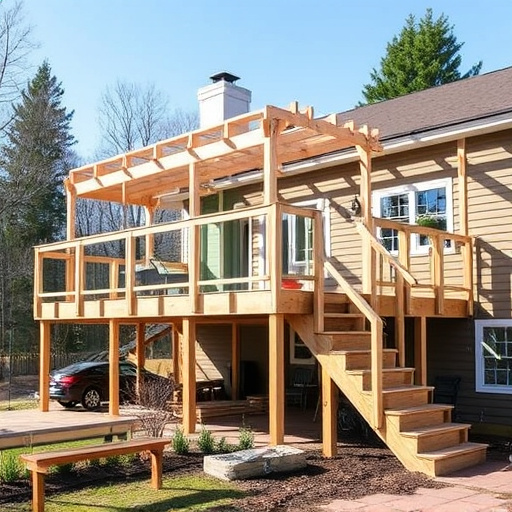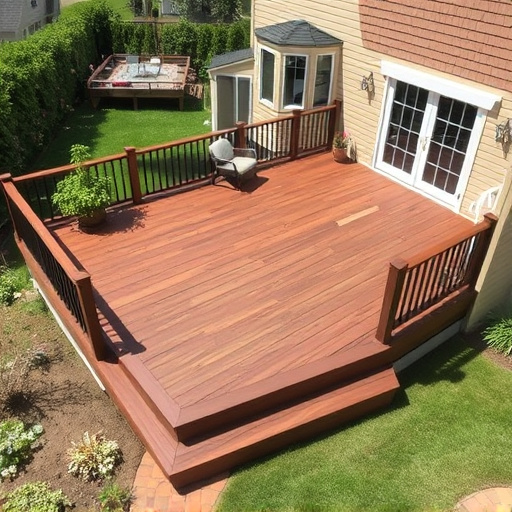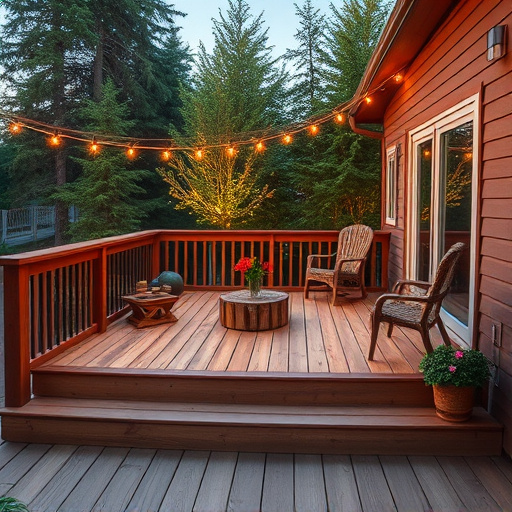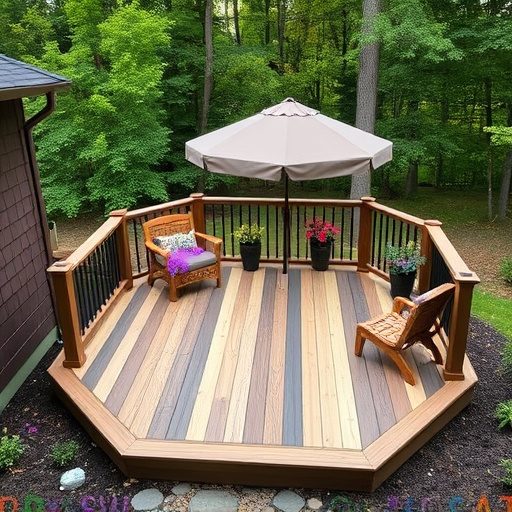Choosing the right wood for custom deck railings is essential, balancing durability, aesthetics, and climate compatibility. Pressure-treated lumber is a popular, cost-effective option for weather resistance, while exotic hardwoods offer superior looks but higher maintenance. Aligning railing designs with roofing and siding choices ensures seamless outdoor integration. Proper drainage through effective siding and gutters safeguards the railing's longevity and appeal.
Transform your deck into a stunning outdoor oasis with custom wood deck railing designs. This comprehensive guide explores the art of enhancing your balcony’s aesthetic while ensuring safety. We delve into choosing the perfect materials, from exploring durable wood options suitable for outdoor conditions to matching them with your deck’s style. Learn creative design principles, from basic patterns to unique curves and geometric shapes, balancing safety and aesthetics. Additionally, discover practical installation tips, covering tools, structural integrity, and building code compliance. Elevate your deck railing game with these expert insights!
- Choosing the Right Materials for Your Deck Railing
- – Exploring wood options: types and their suitability for railings
- – Considerations for weather resistance and durability
Choosing the Right Materials for Your Deck Railing
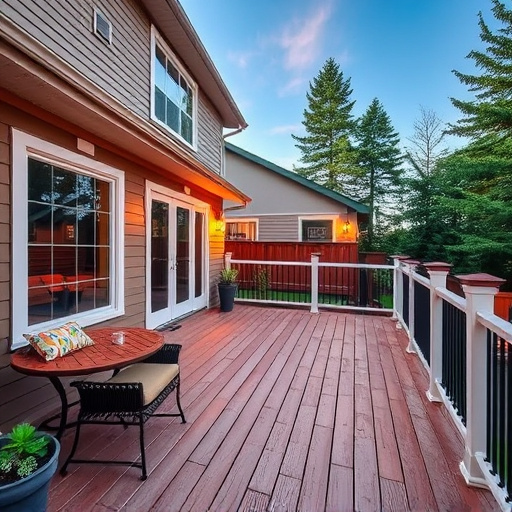
When customizing your wood deck railing designs, selecting the right materials is a crucial step that sets the stage for the entire project’s success. The primary material choice for deck railings is often pressure-treated wood, renowned for its durability and resistance to rot and pests. This type of wood is ideal as it retains its strength even when exposed to varying weather conditions. However, for a more distinctive look, some opt for exotic hardwoods like ipe or teak, which offer superior aesthetics and longevity but may carry a higher price tag.
Consider your climate and local environment too. In regions prone to extreme temperatures or high humidity, materials that excel in these conditions are essential. For instance, certain commercial siding options designed for exterior applications can provide both insulation and aesthetic appeal for deck railings. Additionally, if you’re considering a complete renovation that involves roof consulting or repair services, coordinating the railing design with your roofing material choices can create a harmonious outdoor space.
– Exploring wood options: types and their suitability for railings
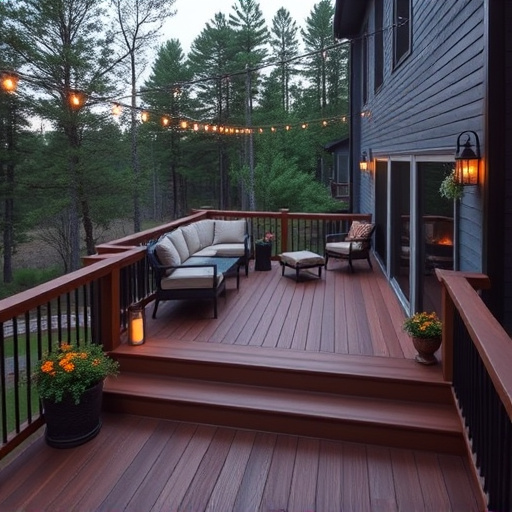
When it comes to customizing wood deck railings, understanding different wood options is essential. The suitability of a wood type for railings depends on its durability, aesthetics, and maintenance requirements. For example, cedar and redwood are popular choices due to their natural resistance to rot and insects. These softwoods offer beautiful, warm tones that complement outdoor living spaces. On the other hand, exotic hardwoods like ipe or teak provide exceptional strength and durability but may require more meticulous care and maintenance compared to softer woods.
Exploring these options with an eye towards your climate and personal style is key. Consider whether you prefer a natural, untouched look or want to enhance the wood’s beauty with stains or finishes. Remember that roofing solutions like deck railing installations should align with your home’s overall design and withstand the elements. Home service solutions offering custom railings can transform your outdoor space, ensuring both safety and aesthetic appeal, much like how roofing services protect your property from the weather.
– Considerations for weather resistance and durability
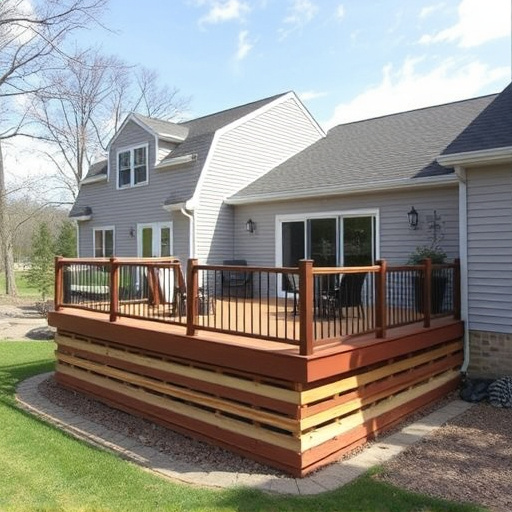
When customizing wood deck railing designs, it’s crucial to consider weather resistance and durability to ensure your investment stands the test of time. Exposing wood to varying weather conditions can lead to rot, warping, and fading, compromising both the aesthetic appeal and structural integrity of your deck railing. To mitigate these issues, opt for high-quality, pressure-treated lumber that has been enhanced with chemicals to resist moisture and fungal growth. Additionally, applying a robust water-based stain or sealant before installation can further protect the wood from environmental factors.
Remember that proper drainage is another key factor in maintaining weather-resistant deck railings. Ensuring that water does not pool or stagnate along the railing’s base can prevent damage caused by prolonged moisture exposure. Integrating effective siding and gutters into your design, or repairing existing residential siding to improve drainage, will help safeguard your wooden railings from potential water damage. By addressing these considerations, you’ll enhance the longevity of your deck railing while preserving its beauty and functionality.
Customizing your deck railing is an excellent way to enhance both the aesthetics and functionality of your outdoor space. By carefully selecting materials that suit your style and climate, you can create a unique and durable railing system. Whether you opt for traditional wood or consider weather-resistant alternatives, there’s no limit to what you can design. So, get creative, explore different options, and transform your deck into a stunning outdoor retreat with personalized railings.




